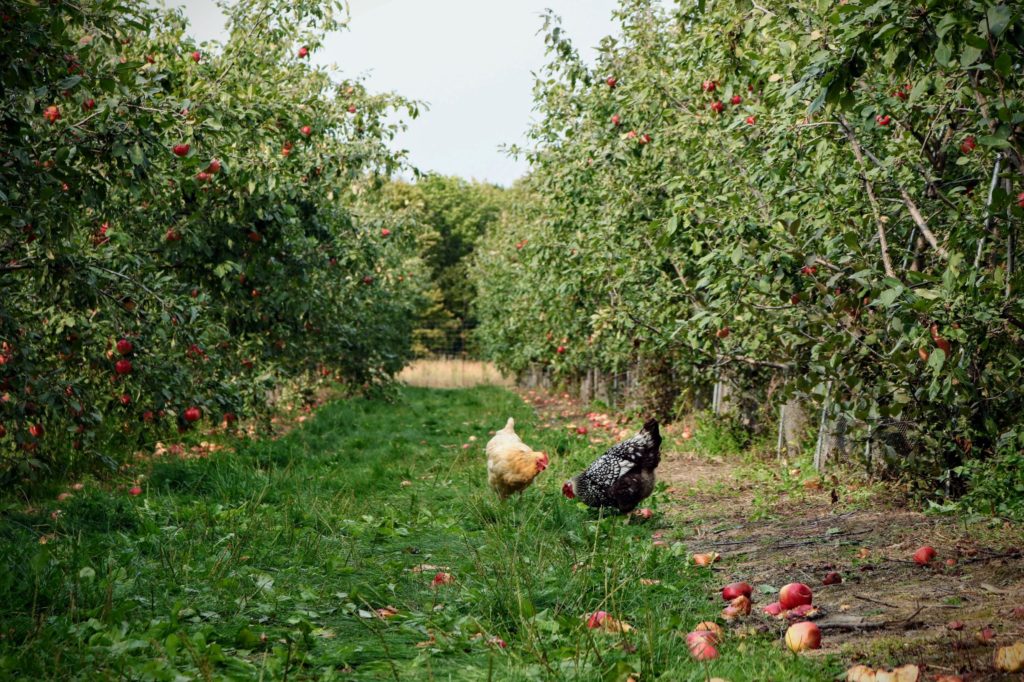
Food Words, Myths, Nutrition and Confusion
Food a great human activity
Food, the term is almost synonymous with life itself. We devote more time to procuring food and eating than we do to any other life-sustaining activity except breathing and sleeping. Enjoying Food is one of our greatest sources of the satisfying act of humans. It is one we share with those we love. We eat as a family, a community, a tribe, nourishing our bodies at the same time that we nourish our relationships. Dining together releases oxytocin, the “love hormone” that stimulates greater human connectivity. While every species must eat, the human imagination has imbued the simple acts of preparing and consuming food with a whole world of emotion and meaning.
Food can express love, gratitude, compassion, creativity, and identity. Historically it has formed a building block of culture—cementing alliances, capturing the unique character of a people, marking significant events. Food is a celebration, a human connection and is life
Yet for millions of people, food is also synonymous with stress, weight gain, neurosis, confusion, and even disease.
1.What are “processed” foods, and how do they fit into a healthy diet?
When we think about processed foods a picture comes of an array of snacks like potato chips, Burgers, Patties etc which are tempted for consumers to eat.
Food processing transforms raw agricultural crops into food products. There are many different food processing methods, from familiar kitchen activities like chop, mix, cook, grind, bake, freeze, can, pickle to specific industrial techniques like a ferment, pasteurize, irradiate, homogenize, dehydrate all of which alter food in some way or another.
Food processing key functions are to keep foods safe, prolong shelf life, preserve or enhance nutrient content fortification), and prevent foodborne illness. Processed foods help people meet nutrition goals.
Majority of foods we see in the market are processed in some way or other in the global supply chain. These include staples like ready- to eat cereal, peanut butter, bread, canned tomatoes, and coffee that make eating easy and convenient and pleasant. Even fresh fruit found in the market has undergone through processing steps, including washing, sorting, and a light edible, tasteless wax to prolong shelf life.
A 2012 study conducted by four science-based organizations (Academy of Nutrition and Dietetics, American Society for Nutrition, Institute of Food Technologists, International Food Information Council) found little difference in healthfulness on average comparing nutrient intakes of 25 351 Americans across a broad range of processed food levels, likely due to the considerable variation within traditional categories.
Definition and Types of Processed foods
| Category | Definition | Example | Nutrition in daily life |
| Unprocessed/ minimally processed foods | Plant or animal foods consumed shortly after harvest, slaughter etc. Methods include wash, grate, peel, fillet, dry, debone, pasteurize, ferment (other than alcohol), dehydrate, freeze, can; products may have minimal packaging (e.g., bag, plastic wrap) | Fruit &vegetables that are fresh or preserved with nothing Added. Fresh squeezed or pasteurized 100% fruit or vegetable juice or dairy milk. Raw and unsalted nuts and seeds . Poultry, and fish ,eggs ,tea, coffee, fresh untreated water | Referred to as “whole” foods (even if cut, peeled, frozen, pasteurized, etc. or milled simply to access the grain). |
| Processed culinary ingredients | Products in original form without added ingredients .Include pressed, milled, ground, and purified. | Sugars (e.g. White, maple syrup), animal fats and plant oils (like butter and canola oil),corn starch, flour, and salt. | Cooking and baking staples that may be fortified if required (like salt and flour) |
| Processed | Modified wholefoods, often with additional ingredients Methods include cans, ars,dehydration,brines, pickles, smoke, and salt. | Canned, jarred, dried, pickled, and frozen fruits and vegetables that include sugar or other ingredients. Tinned or smoked fishes (like tuna). Cheese; meats (not reconstituted) like turkey, ham, and bacon. Nuts (not raw). | Convenient than fresh whole foods and consumed as part of a meal or snack. |
| Ultra- processed | Foods with additives, preservatives, fillers, etc. to prolong shelf life. Methods include hydrogenation, hydrolysis, and reshaping | Bread, breakfast cereal, sweet and salty snacks, and canned Soups.Ready- to eat or quickly prepared frozen burgers, fries, pizza ,packaged baked goods and desserts; meat substitutes (soy, seitan, etc.);sugar- sweetened beverages (e.g., sodas, teas, fruit and milk drinks);and sweetened dairy products | Convenient foods usually Consumed as is, often Unrecognizable from whole foods; tend to be high in sugar, salt, refined grains, calories, and unhealthy fats and low in fibre and nutrients; fortified foods like diet meals and shakes and energy bars |
2.Concept of “natural,” “raw,” in dietary foods. Do they really have any significance.

A whole foods, mostly plant-based diet is the optimum diet for health, vitality, and longevity. What is a whole foods, plant-based diet? Put simply, it is a diet that prioritizes eating whole or unprocessed plant foods ,minimizes meat, fish, dairy products, and eggs ,and eliminates highly processed foods.
Whole foods as seen from above, may not be a vegetarian or vegan diet. Generally whole foods in consumption ,ninety-plus percent 90% plus plant-based diet, which means keeping animal foods (meat, fish, eggs, and dairy products) to 10% or less of intake calories. Within the parameters of a whole foods, 90+% plant based diet there is tremendous flexibility to create meal after meal that satisfies needs, nourishes body, and palatable.
Advice for Good diet 1. Eat whole foods instead of highly processed foods.2. Eat mostly plant foods (90+% of calories).
Follow these two diet rules and you will essentially follow a dietary pattern that resembles those of some of the world’s healthiest and longest-lived populations.
Michael Greger, MD, “Plant foods, with their greater protective nutritional factors and fewer disease-promoting ones, are healthier than animal foods, and unprocessed foods are healthier than processed foods “.
Whole foods Vs Processed Foods
While these do not apply in every case, here are some general rules you can use to help distinguish between whole and processed foods:
Whole Foods
- Are close to their original state
- Spoil faster
- Usually do not have ingredient lists, or, if they do, have short ones
- Are generally sold without packaging
- Are often found around the perimeter of the grocery store
Highly Processed Foods
- Bear little resemblance to their original state.
- Do not spoil easily.
- Have often long ingredient lists.
- Are packaged or boxed.
3. Plant Foods vs Animal Foods
Plant foods grow in the ground or on trees or vines fruits, vegetables, beans and other legumes, grains, nuts, and seeds. They make up much of what we consider real food apples, tomatoes, potatoes, corn, rice, almonds, beans, strawberries, lettuce, and so on. The Whole Foods Diet recommends that 90% or more of calories come from plant-based food. Once again, this is not a vegan diet (unless one choose to eat 100% plants for personal reasons). Still, it is a diet that includes far fewer animal foods than the Standard Non-vegetarian diet.
Animal foods come from the flesh or organs of animals (including mammals, birds, fish, and insects) or are produced by the animal, such as milk products and eggs. For the good Whole Foods Diet, it’s recommended that 10% or less of daily calories come from this category of foods. As a general rule, that means that meat, fish, dairy products, eggs, and other animal foods are eaten occasionally, as side dishes or condiments not as the primary calorie source in every meal.
A sure way to lose weight and optimize the same
Here’s the secret: Eat more vegetables! Add at least one sizeable extra serving of veggies (or fruits) to what you would normally eat at each meal, and be sure to eat those before anything else. You’ll discover the vegetarian diet paradox the more veggies you eat, the more weight you lose, assuming you don’t cover these vegetables in fatty dressings, or cook them in oils.
When you eat whole fruits and veggies, you fill yourself up with low-calorie, fibre-rich, nutrient-rich foods that will leave you less hungry for processed foods or animal foods. A good strategy is to start every meal with a big salad or a bowl of vegetable soup (or a bowl of fruit, if you prefer, at breakfast). Eat more veggies and lose more weight.
4.What’s the difference between “organic” and “conventional” food farming?
“Organic” and “conventional” refer to different sets of farming practices.
Conventional farming is based on
- A) Industrial processes and techniques, including synthetic fertilizers and pesticides, intensive tilling, and complex irrigation systems to manage soil and crops
- B) Concentrated animal feeding operations that often use antibiotics and hormones and minimize (or disregard) animal welfare and wellbeing;
- C) Genetic engineering to breed crops and animals in addition to traditional crop breeding.
Conventional agriculture is focused on maximizing the yield and efficiency of a single animal or crop, and practices have led to many negative impacts s throughout the food system.
As per FAO Organic agriculture is a holistic production management system which
- Promotes and enhances agro-ecosystem health, including biodiversity, biological cycles, and soil biological activity.
- It emphasizes the use of management practices in preference to the use of off-farm inputs, taking into account that regional conditions require locally adapted systems.
- Organic farming is accomplished by using agronomic, biological, and mechanical methods instead of synthetic materials, to fulfil any specific function within the system.
- No use of genetic engineering.
Both conventional and organic agriculture employ pesticides, the only difference being whether the chemicals are naturally or synthetically derived.
Numerous studies have compared the nutritional content of organic versus conventional produce. Studies show considerable variability since farming practices vary so widely: What pesticides were used? In what amounts? How often were they applied? And when? Small differences can often be detected for a few nutrients, though they are usually insignificant— and would not lead to a meaningful difference in health.
Organizations across the board, from WHO to the Environmental Working Group, emphasizes the importance of consuming a diet rich in plants; however, they’re grown: it is far better for your health (and likely no risk at all) to consume copious plant foods for optimal health and disease prevention, whether conventional or organic.